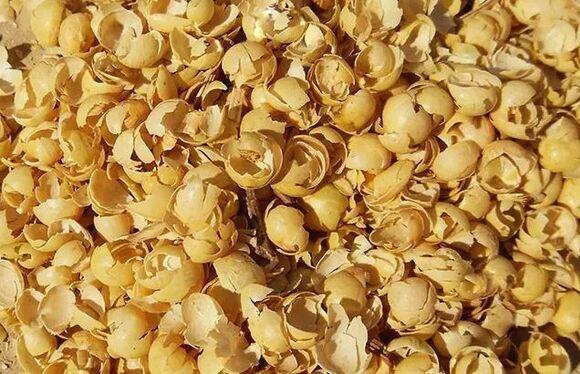Molasses Bean Skin
Soybean hulls are a by-product of soybean oil processing, accounting for 10% of the total volume and 8% of the total weight of soybean. Soybean hulls are mainly the outer coating material of soybean, the color is beige or light yellow, the main components are cell wall and plant fiber. Molasses bean skin is a special product which is made by spraying concentrated soybean oligosaccharides onto soybean hulls and drying with unique technology. Molasses bean skin contains 30% of soybean oligosaccharide and 70% of soybean hulls. Component Content (100%) Moisture 11-13 Crude protein 8 Crude fat 3.5 Ash content 7-9 Crude fibers 22-28 Soy isoflavone 0.3-0.5 Soybean oligosaccharides 30 Among them: sucrose 0-5.8 Stachyose 2.5-4.3 Raffinose 0.9-1.4 Other functional oligosaccharides 8.6 Composition of Molasses Bean Skin The lignification degree of cellulose is an important factor in the digestion of cellulose. The crude fiber content of soybean hulls is high and the lignification degree is very low. Therefore, soybean hull is a supplier of high-quality natural short fibers. Good digestibility Soybean hulls contain a lot of crude fibers. The neutral detergent fiber (PDF) and acid detergent fiber (ADF) of soybean hulls account for 63% and 47% respectively, but the lignin content is only 1.9%. This makes the digestibility of dry matter of soybean peel up to 95 %. Typical Components of Soybean hulls (Based on Dry Material) Component Content Component Content Dry Material 90 NDFCP 3.9 Crude protein 12 ADFCP 0.9 Non-degradable feeding protein 28 Non-structural carbohydrates 16 Crude fibers 38 Lignin 1.9 Acid detergent fiber (ADF) 47 Ether extract 2.5 Neutral detergent fiber (NDF) 63 Ash content 5 The content of neutral detergent fiber (PDF) in molasses bean skin is more than 30%. Replacing part of grain feed with molasses bean skin can not only reduce acidosis caused by high-concentrate diet but also form favorable rumen pH value. Moreover, molasses bean skin can stimulate the rapid growth of microorganisms that decompose fibers in rumen juice and enhance the activity of degrading fibers. Feeding molasses bean skin can also reduce the metabolic diseases of ruminants. Good palatability Soybean oligosaccharides account for 30% of molasses bean skin. Soybean oligosaccharide (SBOS) is a kind of functional oligosaccharide. The main components of SBOS are sucrose, stachyose, and raffinose, which can proliferate bifidobacteria. The sweetness of soybean oligosaccharides is similar to sucrose, which makes the product taste unique and palatable. Improving Milk Production Performance 70% of molasses bean skin is soybean hulls. The net milk production energy of soybean hulls is 8.15MJ/kg, which is higher than 6.72 MJ/kg of wheat bran and slightly lower than 8.23 MJ/kg of corn. Soybean isoflavones from molasses bean skin (known as natural plant estrogen) are high in content, which can help to increase the milk production of dairy animals and can greatly prolong the peak lactation period of dairy animals. Increasing feed intake Straw has poor palatability, low crude protein content and mineral content, and high lignin content. In the process of drying forage into hay, the nutrient loss due to chemical and mechanical action is more than half, and the utilization rate of herbivores is low. Some crude feed can be replaced by molasses bean skin. Molasses bean skin does not occupy rumen space, so cows can eat more feed. Use of molasses bean skin 1. The molasses bean skin can be added to the ruminant mixture in the proportion of 8-15%. 2. Can be fed directly, feeding 1.5-2.5 kg/head/day










